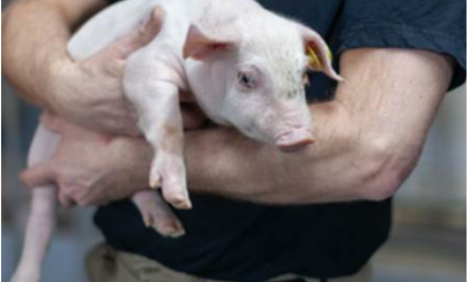



Recent Trends in Gut Health Management
New concepts are required to master all the challenges ahead. Thus, the animal production sector will have to respond with appropriate tools. Obviously, all the surrounding conditions point to one direction: Implementation of safe, sustainable and profitable production techniques.Natural Growth Promoters have been a key research area in BIOMIN since the founding days of the company. The idea of Natural Growth Promotion has been developed to provide powerful and sustainable feeding concepts based on gut health management through natural feed ingredients.
The digestive tract is a vital organ in which feed is reconstituted biochemically into body growth. This is a huge metabolic effort, and unquestionably, only a healthy digestive tract is capable of dealing with this effort in a competitive biodiverse environment and under sometimes challenging external conditions. The fundamental objective is to keep this important organ healthy, thereby maintaining its functionality on a high and efficient level. The gut microflora is an active participant in this digestive process, being influenced by diet, host physiology, as well as environmental factors and stress. Conway (1994) referred to the relationship as “the gut ecosystem”, as shown in Figure 1.

Figure 1. The gut eco system (according to Conway, 1994)
In a healthy animal, the gut microflora consists mainly of beneficial bacteria (e.g. Lactobacillus, Bifidobacterium or Bacteroidaceae), but also a small portion of potentially pathogenic bacteria (e.g. Salmonella, E. coli, Clostridia, Campylobacter, Brachyspira) is present. It is of major interest to keep the gut microflora under control, because, to a certain extent, gut microorganisms compete with the host animal through
- consumption of dietary energy
- degradation and utilization of dietary amino acids
- production of toxic metabolites
- creating the demand for immune response.
Huge Potential for Phytogenics
Phytogenic compounds, including herbs, spices and essential oils, have been gaining tremendous attention in human health as well as animal feeding programs during the last few years. Their use has a long history in human consumption as flavors, fragrances and medicines. Their beneficial effects have been shown in a vast number of scientific reports pertaining to their antimicrobial, antifungal, antioxidant and many other biological activities. Nowadays, these compounds have been used more and more frequently as animal feed additives. In deed, a growing number of scientific and field reports show that these compounds exert substantial performance-enhancing effects in animals (Kroismayr et al., 2008a; Windisch et al., 2008). Hence, phytogenic substances are considered to be well accepted by consumers due to their natural character and proven efficacy. Figure 2 illustrates the three general features of phytogenics, which make them attractive in animal nutrition.
To continue reading this article click here








